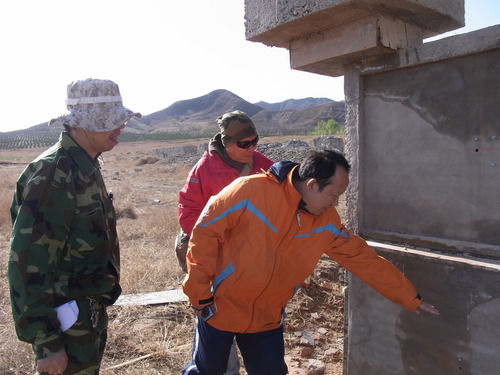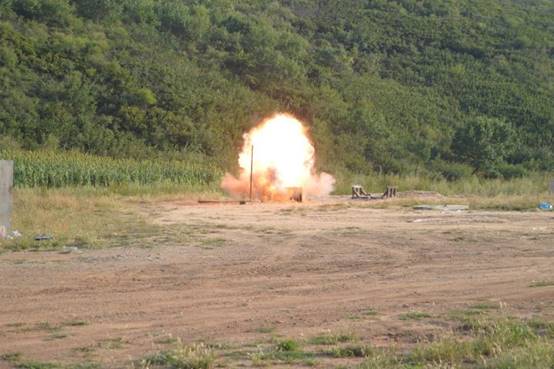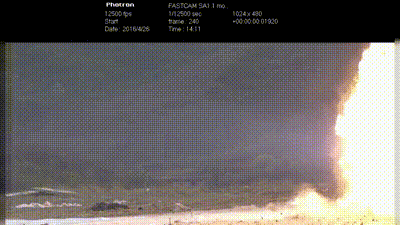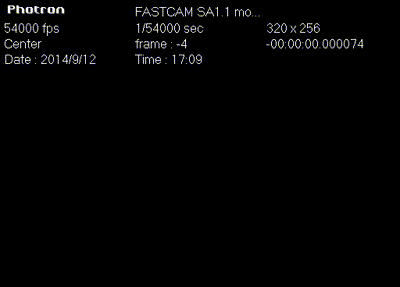The mere mention of the word "explosion" may send chills down the spines of ordinary people or cause a panic , but Shi Yanchao, a 38-year-old professor from Tianjin University’s School of Civil Engineering, has too much to say about it.
Prof. Shi is an expert in explosion proof design of civil buildings. He conducts explosion tests nearly every day.

Shi Yanchao (first from right) is preparing for the field explosion test.
"It's really hard to measure such a waveform under the overpressure load of 12 MPa, but we made it, and the data is quite perfect!" Prof. Shi Yanchao’s face was lit up with a broad smile and radiated with joy as he checked the short distance pressure–time history curve of the explosion showed on the computer.
After two years’ fieldwork, four explosion tests and painstaking efforts, Prof. Shi and his team filled a research gap in the world by creating a brand-new statistical model of short-range explosion load.

Shi’s field explosion test
"People around the world may encounter terrorist attacks or accidental explosions in their lives. Therefore, it is important that certain buildings should have explosion proof design, the key to which is the analysis and determination of the explosion loads that buildings can bear," Shi Yanchao said, adding that the currently widely used empirical formulas and diagrams were most useful to determine long-range explosion load but may cause an actual error as high as 500% when measuring short-distance explosion load as they ignore the effect caused by the shapes of explosive charges and the position of the detonation point.
Shi Yanchao realized that it was necessary to design a new type of short-range explosion load model and determine the dynamic curve of close explosion strength. The short-range explosion, however, is often accompanied with such interference factors like high temperatures, flames, and electromagnetic radiation, which mam its test an international difficult problem.
After demonstrating the test plan for dozens of times, Shi and his team began to conduct field tests pf close-range explosion at the beginning of 2017.
"The close-range explosion load test is closely related with the rigidity of the test building which is expected to cause as less vibration interference as possible when it is bombed. At the beginning, we used the reinforced concrete structure for the test, and the result was not as good as expected." Shi Yanchao sighed, pointing to the time-history curve graph of explosion load obtained from the first test on the computer screen and saying, "Look at this curve, the vibration interference is too great."

The process of fragments flying away from the reinforced concrete slab explosion is captured by high-speed camera during Shi Yanchao's explosion test in the field.
About half a year later, Shi Yanchao came to the test site again. This time he chose a very thick steel plate as the bomb target. The steel plate was fixed on the ground for testing. Unfortunately, they failed to measure the curve demonstrating regular change of explosion load.
"It takes a long time and countless demonstrations to prepare for a test. And every time when conducting a field explosion test, there are all kinds of unexpected situations coming up such as the destruction of the sensor installed on the explosive." Shi Yanchao said.
The third test was a failure as well, and at this time, some of the students who conducted the test with him had already graduated.
"Work has to continue." In August 2019, Shi Yanchao came to the test field for the fourth time with some new team members. This time, they first fixed a shelf on the ground which then was used to hold the thick steel plate for test. They also made sure that the sensor was firmly installed, monitored and well protected as well as other test equipment. When all was settled and the test site was cleared, Shi pressed the detonator button to detonate TNT explosive remotely. Bang! After a loud noise, the load monitoring curve appeared on the computer. They have made it!

The picture shows the explosion shock wave spreading process of Shi Yanchao's super close-range explosion load test taken by a high-speed camera.
Shi Yanchao recalled that he was too busy summing up test experience to jump for joy at that moment. "Failure also helps. In my papers published before the success of the research, I was happy to share with fellow researchers my analysis of the failed tests."
Based on the test results, Shi Yanchao proposed and established a statistical model of close-range explosion loads, and published relevant research results in international core journals. "This statistical model fully considers the uncertainty of the close-range explosion load. When guiding the anti-explosive design of the building, the explosion load can be reasonably determined according to the needs to ensure the anti-explosion safety of the building." Shi Yanchao smiled with relief and joy.
In recent years, with the help of the national publishing fund, Shi Yanchao and his mentor have jointly published Blast Analysis of Building Structure, the first monograph in the field of anti-explosion design of civil buildings in China. Besides, he participated in the compilation of China’s first Standards for Blast Protection Design of Civil Buildings as a key member. He also helped to revise Code for Anti-collapse Design of Building Structures, in which the structural anti-explosive continuous collapse design was included for the first time.

Shi Yanchao's team receives the second prize of National Science and Technology Progress Award in Beijing in January 2013.
Shi Yanchao said that because of the huge variables, there were still many scientific problems in the field of anti-explosion that have yet to be solved. He expects to lead his team and make study further in this filed. "Some of my students study the scope of human eardrum and lung damage caused by explosions, some study how to optimize the size of doors and window glasses to improve its explosion-proof quality, and some study the performance evaluation of buildings after explosions. Almost every graduate student has a new research direction." Shi Yanchao noted.
By Sun Fei
Editor: Eva Yin






